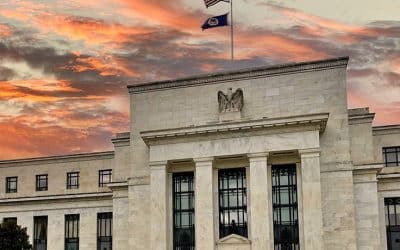The dilemma of rising rates and the case of SVB

Redacción Mapfre
Gonzalo de Cadenas, director of macroeconomic and financial analysis at MAPFRE Economics.
Silicon Valley Bank (SVB) is a commercial bank that provides financial services to tech companies. Historically, the bank has recorded solid financial results, by giving special attention to high-growth sectors of the economy. However, on March 11, 2023, SVB experienced a crash because of concerns about the impact of rising interest rates on the banking sector, and the fragility of many of SVB’s assets in proportion to its liabilities.
In general, the plummeting price of SVB’s stock can be explained by worries about the impact of interest rate hikes on the lending activities of banks, and on the value of their assets. The fact that SVB had focused its provision of financial services on tech and life sciences companies may have made the bank more vulnerable to those effects, because those are companies that may tend to have limited financial resources.
SVB’s customers are predominantly companies in those two industries, which are often startups or high-growth enterprises. They are companies that may have limited operating histories and cash flows, which can make them more vulnerable to rising interest rates. If those companies are facing higher costs to cover their debt, they may reduce their borrowing levels or have more difficulty servicing their existing debts, and this may in turn affect their ability to grow and repay their loans.
One of the reasons for the current concerns about rising interest rates is that they can have a significant impact on banks like SVB, which largely depend upon their lending activities to generate revenue. When interest rates rise, loans become more expensive, and this can cause a slowdown in those lending activities. In turn, this can affect profitability and the ability of these banks to pay dividends to their shareholders.
Another factor that raises concerns about higher interest rates is their potential impact on the economy in general. If interest rates rise too quickly, it can hinder economic growth and even lead to a recession. It can also have a significant impact on companies that rely upon borrowing in order to grow, such as SVB’s customers in the tech industry.
In addition to worries generated by interest rate hikes, the banking sector as a whole is facing other challenges. For example, decreases in the values assigned to their assets. Banks tend to carry a significant amount of assets on their balance sheets, and if the value of those assets drops, it can lead to losses for the institution and affect its capacity for granting loans. It can also affect a bank’s ability to attract new customers, or even to retain its existing ones. In other words, when interest rates go up, the value of the fixed-income securities held by banks can go down, and this may cause losses.
Maturity gaps are another source of concern for the banking sector. This refers to the gap that may arise for a bank between the maturity dates of its assets and liabilities. If a bank has long-term loans on its books, while also relying upon short-term financing, it may run into liquidity problems if that short-term financing runs out. This can lead to a decrease in lending activity and, again, have effects on the bank’s profitability.
However, similar challenges are being faced by the banking sector as a whole, and the industry has demonstrated its willingness to adapt to changing market conditions. We will have to wait and see how quickly this incident is resolved. The reaction by the Fed gives us at least one demonstration that the appropriate tools are available, while investors remain cautiously optimistic about future outlooks for the banking sector.



